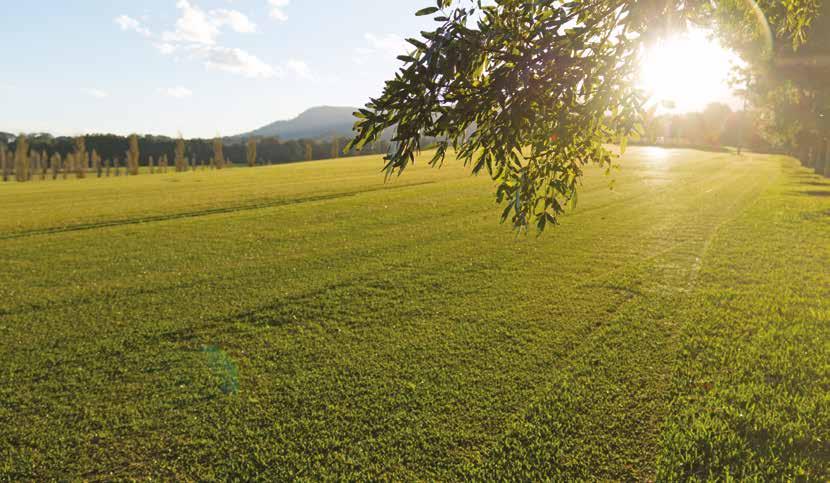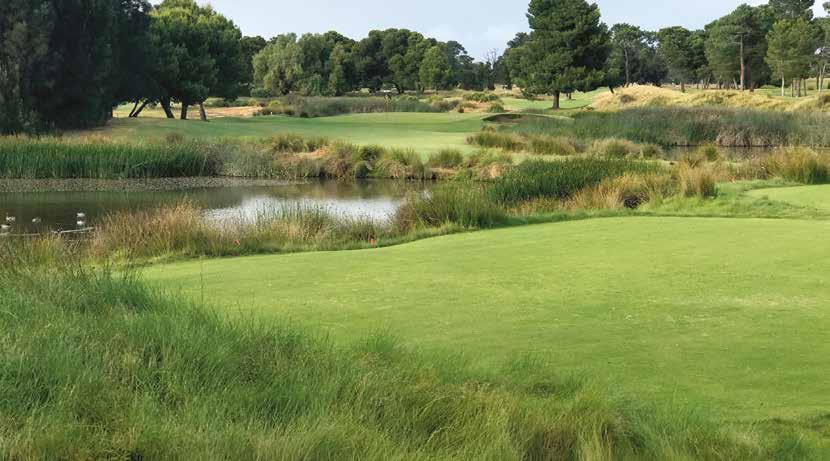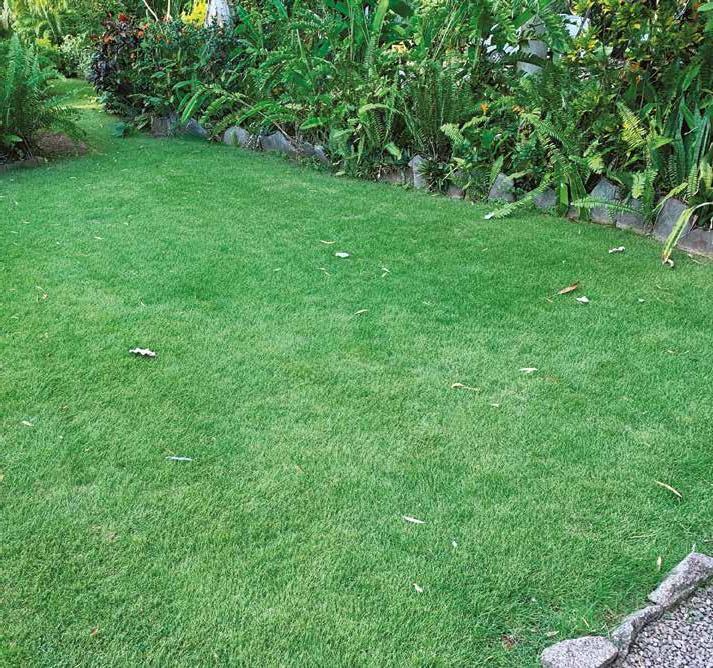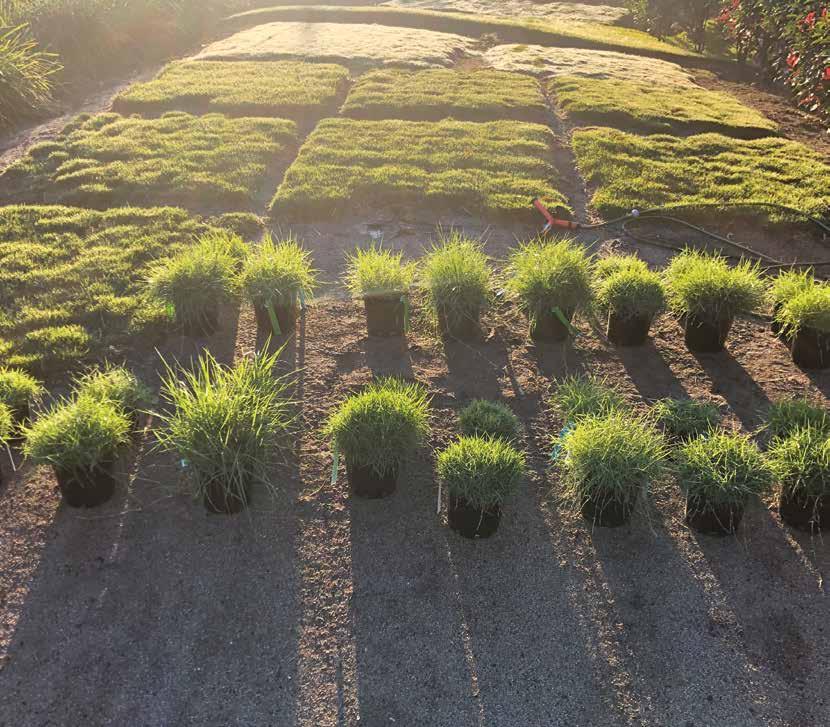
7 minute read
TURF CONSULTANCY
The Changing Face of Turf Consultancy
The good ship sports-turf-industry has been sailing a steady course for many years. Developments and innovations come and go, but it mostly appears to remain on an even keel. However, there is something in the water, change is happening, and STRI is at the forefront of that change. Principal consultant, Dr Richard Gibbs, shares his views on how STRI has evolved since the 1980s. If you had engaged STRI in the 1980s, when the oldest of us still active as consultants in the industry probably started our careers, your experience might have been very different from today. The options for finding a consultancy might have been limited to one or two organisations. The consultancy services delivered will have been heavily focused on formal auditing or inspection of a facility at the request of senior club officials. Moreover, the consultants might have had only cool season turfgrass experience and be largely confined to the UK market. And there was one other thing you could probably be sure of – there was still a lot of primary sports turf research being carried out for the wider good of the industry such as sand selection, or different types of profile construction and drainage techniques. This type of research was funded largely by various sports governing
Advertisement
Hearts Midlothian In those days STRI was very comfortable in that camp. Research and consultancy to thousands of happy clients. A simple rule of business is if you do not adapt to changing market forces you will fail. Therefore, STRI evolved to embrace developments in technology, increased competition and commercialism, the significant elevation of the overall skillset of the industry and the ever-increasing expectation by players, sports’ governing bodies and spectators alike that turf can be grown successfully and perform well in all climates and weather conditions.
Diversification
One of the biggest changes since the 1980s has been an increase in diversification of the type of work carried out by STRI consultants. No longer can the business be reliant on a diet of providing local agronomic advice and ‘public good’ research. Nor can there be an expectation that information or supply of services will be provided for free.
Furthermore, many sporting codes and associations now employ their own specialist in-house advisors, for example, the Royal & Ancient Golf Club, the Institute of Groundsmanship, FIFA and the England and Wales Cricket Board. Public good research hardly exists anymore. In recognising that these changes were coming, STRI has taken a very pro-active approach in developing new and innovative services. This change is not without some significant controversy.

The above situation is analogous to stadium development. These buildings are expensive to build and maintain, and many need to operate as fully multi-use venues for economic survival, including having to change the playing surface from one use to another. At one end of the extreme is a stadium which operates more as an arena, where the predominant mode is not a natural turf sports pitch within which non-turf events like concerts need to be tolerated, but in fact the other way round – a multi-sports and events surface in which the occasional natural turf surface has to be installed.
There are of course other factors that have led to diversification in the type of services being offered by STRI, and these relate principally to two important factors:
keeping up with technological developments
recognising that the sports surface is often only a small part of a much bigger development The merging of natural and artificial turf technologies (hybrid systems), a greater focus on sustainability plus a greater crossover with engineering disciplines account largely for moving into areas of expertise not covered by traditional agronomic sports turf consultancy. Sports turf consultancy services delivered by STRI now overlap with urban drainage design, lighting, heating, cooling, and ventilation control, robotics, biomechanics, precision/ remote sensing and digital design. It has also been very interesting to observe how the artificial turf industry has ‘adopted’ natural turf as its own through the provision of artificial turf ‘carpet hybrid’ reinforcement systems. Hybrid turf systems are now described as a third category of turf – the other two being artificial turf and natural turf. On paper this may make sense, but a hybrid turf system is absolutely a natural turf system – so the adoption should really be seen as the other way around!
Recognising that being able to offer a large team skilled in planning, modelling and sustainability, as well as full project management as part of a wider offering of design and consultancy services, has been another development within STRI. An early example has been the use of the ‘hemiview’ light/shade analysis for stadium pitch development. Such services not only ensure a greater level of control (and responsibility) over a project, but they also allow the sports surface to take greater prominence through the entire design process of a project. But there is another aspect too – as a consultancy has matured in experience and gained a solid reputation, this has resulted in being able to export those services overseas into countries with little or no turf research or consultancy background. In turn, this development has brought about the need for STRI consultants to have a much greater level of knowledge and expertise over a wide range of climates from the cold winters of Russia (-30 o C) to the hot, dry climate of the of the Middle East (+50 o C) and the humid climate of the tropics, not something experienced by your average UK climate, at least not yet.
Commercialisation and acquisitions
A highly controversial aspect of modern sport turf consultancy is the degree to which the traditional sports turf consulting role has entered the world of commercialism. What has caused this move? Well, first of all let’s recognise that STRI and other sports turf consultancies have been operating commercially for years. STRI has never been government funded or has ever received some form of public good operating grant. Other obvious answers are the shrinking nature of ‘bread and butter’ sports turf consultancy (many more players in the market), the fact that sports turf contractors
Australian research centre

Steve Baker completes ball bounce testing

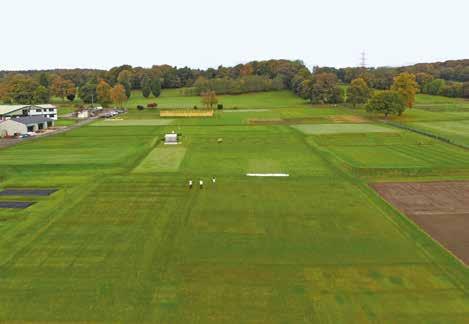
offer in-house design/build services and that most sports turf research carried out by STRI is product-focused, commercially sensitive and therefore confidential.
One by-product of commercialism and diversification in the sports turf industry has been the formation of syndicates or alliances as well as the acquisition of subsidiaries and setting up of overseas offices (the ‘group’ expansion). For example, the STRI Group now offers a complete in-house ‘plan, design, build and operate’ package for certain types of project. The Group expansion also allows a fully international service to be provided, including the ability to conduct sports turf research in both cool and warm season climates.
Standards, reporting and data management
As the consulting market becomes more competitive, so has the nature of reporting changed. Gone are the long-winded consulting reports that take many hours to produce. Many reports can now be replaced by more visual, punchy reports or video, with a ‘dashboard type’ summary UK research centre on the front page which are based on performance data collected over a period of time. Results can be uploaded to an online portal and can be compared against standards being developed in the industry. It’s all about numbers, presentation and being succinct.
A similar style of reporting can also be produced by greenkeepers, superintendents, head groundsmen and turf managers using their own test equipment and data management systems such as the STRI TurfSync portal (see STRI Bulletin Issue 288). But with data collection comes processing, analysis and interpretation. As sports surface performance testing becomes more readily accessible and affordable, so too does the volume of data generated. Therefore, we need to be careful not to get lost in the numbers at the expense of what is staring us in the face, such as the cause of diseased or waterlogged turf.
“The trends in Australian turf consultancy have followed a similar pattern over the past 30 years with the focus being in online portals that provide the client with immediate real time data as opposed to hard copy reports. Advance technologies have also aided in areas of design and construction as client expectations on playing surface quality have increased significantly in recent times”. Peter Anderson STC Australia”
Conclusions
As in so many other areas of the sports turf industry, the style of sports turf consultancy at STRI is changing rapidly in response to changing demands in the market. The changes are being driven by some very pro-active developments in the way services are delivered. Consultancy is becoming a solutions delivery mechanism where specific problems and projects are managed with a much more encompassing and integrated approach compared with 30 years ago.
In time, traditional consultancy may well be replaced almost entirely by automated field sampling and testing, with algorithmbased interpretation and reporting. One day we may even have ‘smart’ soils and rootzones based on nanotechnology. But for the moment, I shall be hanging on to my pencil and soil sampler. We are definitely at a crossroads.





